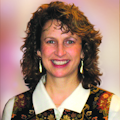CHICAGO, IL--“Every nascent technology needs a community to gather around and chart the path forward. MIRTHE is providing that to the mid-IR community,” said Maxion Technologies’ (College Park, MD) CEO Sohrab Zarbarian. “MIRTHE is a community organizer!” he chuckled. Zarbarian made his comments during a March 11 breakfast meeting at Pittcon 2009 that was hosted by MIRTHE.
A National Science Foundation Engineering Research Center headquartered at Princeton University and launched in 2006, The Mid-Infrared Technologies for Health and the Environment (MIRTHE; Princeton, NJ) Center also involves five other universities (City College of New York, Johns Hopkins, Rice, Texas A&M, and the University of Maryland, Baltimore County), and includes a total of 40 faculty and more than 100 students (see www.laserfocusworld.com/articles/259920.)
Zarbarian noted that Maxion has been a MIRTHE partner since the beginning, “and this has had a positive effect on the company,” he said, pointing to benefits such as access to world-class faculty, facilities, potential hires, and intellectual property (one of MIRTHE’s slides listed 13 inventions and patents disclosed, filed, or granted within the past two years; see www.laserfocusworld.com/articles/355399 and www.laserfocusworld.com/articles/348833). He also emphasized the importance of both formal and informal interaction with other industrial partners facilitated by MIRTHE: “Interaction is extremely important at this stage of the technology.”
Working toward goals
Zarbarian was on hand to represent the industrial partner perspective at the meeting, but MIRTHE Center managers, including executive director Joseph Montemarano, director Claire Gmachl, and industrial liaison associate Bernadeta Wysocka ran the event and summarized the Center’s work. MIRTHE is a ten-year program, Gmachl said, with a focus on clean air (all its member universities are located in areas struggling to meet air quality standards). In fact, MIRTHE has a stated goal to develop mid-IR (approximately 3–30 µm) optical trace-gas sensing systems--based on new technologies such as quantum-cascade lasers or quartz enhanced photo-acoustic spectroscopy--with the ability to detect minute amounts of chemicals found in the environment or atmosphere, emitted from spills, combustion, or natural sources, or exhaled in human breath.
One of the projects the team proudly reported was a field campaign that sent seven students to Beijing, China to monitor air quality, clouds, and precipitation during the 2008 Olympic Games. Of particular interest were analyses of the impacts of pollution-reduction strategies: In preparation for the games, the city had reduced auto traffic by 40%, and shut down factories and local construction efforts. MIRTHE deployed two environmental sensor systems: QCLOPS (quantum cascade laser-open path remote sensing) tracked multiple trace gases using a tunable laser and absorption spectroscopy, while an NO Point sensor measured trace gas plumes. The group is now reviewing its data.
Framework for the future
The ultimate goal of the research is to produce compact, network-ready sensors that provide unprecedented performance and are so low in cost and easy to use that they transform aspects of the way doctors care for patients, local agencies monitor air quality, governments guard against attack, and scientists understand the evolution of greenhouse gases in the atmosphere.
For the future activities, Wysocka explained that MIRTHE plans growth of the industry/practitioner consortium through recruiting of new partners at all levels of membership, more and closer interactions with industry partners, co-hosting of regional SBIR workshops and organization of conferences, efforts to further connect students with industry, a venture-capital investment focus group, and further promotion of MIRTHE at industry events
Fulfilling the latter point, MIRTHE will exhibit next at CLEO/IQEC 2009 (May 31–June 5, Baltimore, MD) and the OPTOmism Executive Forum & Conference (May 18–20, Santa Clara, CA).
About the Author

Barbara Gefvert
Editor-in-Chief, BioOptics World (2008-2020)
Barbara G. Gefvert has been a science and technology editor and writer since 1987, and served as editor in chief on multiple publications, including Sensors magazine for nearly a decade.